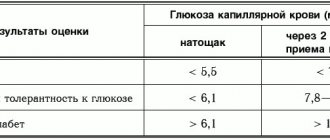Published: 10/01/2021 13:30:00 Updated: 10/01/2021
Epilepsy is a chronic neurological disease characterized by recurrent attacks with loss or confusion of consciousness associated with episodes of pathological electrical activity in a region of the gray matter of the brain.
An epileptic seizure is a temporary disturbance of consciousness, accompanied by motor, sensory, autonomic, and mental disorders.
The prevalence of epilepsy among the world's population is 10%; about 5 million new cases occur annually: 49 per 100,000 population in high-income countries and 139 per 100,000 population in countries with middle and low economic levels [3]. In total, epilepsy is diagnosed in 0.8% of adults and 1% of children [2].
Epilepsy in children is most common in the first year of life: 233 per 100,000 children under one year of age; among children from 1 to 15 years old, from 5 to 10 cases per 1000 children are registered [1].
The diagnosis of epilepsy can be made after the first attack if there is reason to assume a high risk of recurrence.
general information
Epilepsy attacks have been known to people for a very long time. It was either mistaken for demonic possession or associated with a person’s special talent. Today, one or another form of pathology is observed in 10 people out of 1000. Symptoms can occur in newborns and the elderly, in men and women with the same frequency. Moreover, similar processes occur in the central nervous system of some animals, for example, dogs.
The main mechanism for the occurrence of attacks is the synchronization of the work of all nerve cells in a certain area. It is called an epileptogenic focus and determines the set of symptoms and their severity. Contrary to popular belief, the disease is not limited to seizures with loss of consciousness. There are a large number of variants of seizures with varied symptoms, depending on the area of the brain in which the pathological focus occurs.
Make an appointment
When to see a doctor?
Only an epileptologist knows exactly how epilepsy manifests itself in children, can determine its type and prescribe adequate treatment.
Therefore, if you notice the first sign of epilepsy in a child, immediately contact a competent specialist. The earlier he diagnoses the disease, the faster and easier the therapeutic process can be.
The pediatric department of JSC “Medicine” (clinic of academician Roitberg) employs specialists who have many years of practice behind them and work with the most difficult situations.
The building, equipped with the latest specialized technology, is located in the center of Moscow, at 2nd Tverskoy-Yamskaya lane, building 10. Just a 5-minute walk away are the Mayakovskaya, Tverskaya, Chekhovskaya, and Novoslobodskaya metro stations. . You can make an appointment for your child by calling +7 (495) 995-00-33 or using the feedback form.
Causes
The functioning of the brain is a complex process that requires the constant interaction of many structures. A failure at any level can cause the formation of an epileptogenic focus. Among the most common causes of epilepsy in adults and children are:
- heredity;
- traumatic brain injuries;
- acute or chronic intoxication, especially alcoholism;
- infectious lesions of the brain or its membranes (encephalitis, meningitis);
- acute and chronic cerebrovascular accidents, including strokes;
- malignant and benign tumors in the cranial cavity;
- birth injuries;
- parasites that develop in brain structures: echinococcus, pork tapeworm;
- neurodegenerative diseases (Alzheimer's disease, multiple sclerosis, Pick's disease);
- hormonal imbalances, especially lack of testosterone;
- metabolic disorders, etc.
There are cases when the cause of epilepsy cannot be identified. In this case, the disease is called idiopathic.
Myth 6. An epileptic attack is provoked by emotional tension and stress.
In fact. Not always. An epileptic attack can be triggered by alcohol intake, intoxication, and even overheating in the sun, especially if a person suffers from a photodependent form of the disease. In approximately 50% of patients in this group, attacks occur only when watching television (especially light shows), flickering the monitor screen (during computer games), contemplating color music in discos, riding a bicycle along linearly planted trees, flickering headlights of passing vehicles (while driving in car), etc.
Article on the topic
Gagik Avakyan: “Those suffering from epilepsy are often talented.”
A serious provoking factor for the occurrence of attacks is considered to be a violation of sleep patterns - late falling asleep, forced wakefulness at night (due to night shifts or “parties”) or too early, forced awakening. Traveling with time zone changes of more than two hours can also unsettle a patient with epilepsy. They are contraindicated for such people.
Types and symptoms
Epilepsy is multifaceted and multifaceted; its symptoms are not limited to seizures. The most common classification is depending on the severity of attacks and their main manifestations.
Aura (harbingers)
Many epileptic seizures begin with an aura. This is the name given to a complex of specific sensations that occurs shortly before a seizure. Manifestations of an aura can be completely different: paresthesia (pathological sensations), a specific taste in the mouth, auditory, visual or olfactory hallucinations, etc. Before the appearance of an aura, a person often begins to experience causeless anxiety and internal tension.
Partial (focal) seizures
These conditions occur when a small area of the brain is involved in pathological overexcitation.
Simple partial seizures are characterized by preserved consciousness and last only 1-2 minutes. Depending on the location of the pathological focus, a person feels:
- sudden change of mood for no apparent reason;
- small twitching in a certain part of the body;
- feeling of déjà vu;
- hallucinations: lights before the eyes, strange sounds, etc.;
- paresthesia: a feeling of tingling or crawling in any part of the body;
- difficulty pronouncing or understanding words;
- nausea;
- change in heart rate, etc.
Complex attacks are characterized by more severe symptoms and often affect consciousness and thinking. Human can:
- lose consciousness for 1-2 minutes;
- there is no point in looking into emptiness;
- scream, cry, laugh for no apparent reason;
- constantly repeat any words or actions (chewing, walking in a circle, etc.).
Typically, during a complex seizure and for some time after it, the patient remains disoriented for some time.
Generalized seizures
Generalized seizures are one of the classic signs of epilepsy that almost everyone has heard of. They occur if the epileptogenic focus has spread to the entire brain. There are several forms of seizures.
- Tonic convulsions. The muscles of most of the body (especially the back and limbs) simultaneously contract (come to tone), remain in this state for 10-20 seconds and then relax. Such attacks often occur during sleep and are not accompanied by loss of consciousness.
- Clonic convulsions. Rarely occur in isolation from other types of attacks. Manifested by rhythmic rapid contraction and relaxation of muscles. The movement cannot be stopped or delayed.
- Tonic-clonic seizures. This type of attack is called grand mal, which means “great illness” in French. The attack is divided into several phases: precursors (aura);
- tonic convulsions (20-60 seconds): the muscles become very tense, the person screams and falls; at this time his breathing stops, his face becomes bluish, and his body arches;
- clonic convulsions (2-5 minutes): the muscles of the body begin to contract rhythmically, the person thrashes on the floor, foam is released from the mouth, often mixed with blood due to a bitten tongue;
- relaxation: convulsions stop, muscles relax, involuntary urination or defecation often occurs; consciousness is absent for 15-30 minutes.
After the end of a generalized seizure, a person remains for 1-2 days feeling overwhelmed, problems with coordination of movements and fine motor skills. They are associated with cerebral hypoxia.
- Atonic attacks. They are characterized by short-term muscle relaxation, accompanied by loss of consciousness and falling. The attack lasts literally 10-15 seconds, but after it ends the patient does not remember anything.
- Myoclonic seizures. They manifest themselves as rapid twitching of the muscles of individual parts of the body, usually the arms or legs. The seizure is not accompanied by loss of consciousness.
- Absence seizures. The second name for attacks is petit mal (minor illness). This symptom of epilepsy occurs more often in children than in adults and is characterized by a short-term loss of consciousness. The patient freezes in place, looks into emptiness, does not perceive speech addressed to him and does not react to it. The condition is often accompanied by involuntary blinking of the eyes, small movements of the hands or jaws. The duration of the attack is 10-20 seconds.
Pediatric epilepsy
Childhood epilepsy has many masks. In newborns, it can be manifested by periodic muscle contractions that do not resemble seizures, frequent tilting of the head back, poor sleep and general restlessness. Older children may suffer from classic seizures and absence seizures. Partial seizures most often occur:
- severe headaches, nausea, vomiting;
- short periods of speech disorder (the child cannot utter a single word);
- nightmares followed by screams and hysterics;
- sleepwalking, etc.
These symptoms are not always a sign of epilepsy, but they should serve as a reason for an urgent visit to the doctor and a full examination.
Precursors of epileptic seizures
The first harbinger of epileptic seizures is an aura. It is individual for each patient. Thanks to the constant warning signs, patients can warn others about the onset of an attack or independently move to a safe place.
There are the following types of aura that precede the onset of an epileptic attack:
- Hallucinations;
- Sharp contraction of the muscles of the upper or lower extremities;
- Repeating the same movements;
- Burning, crawling or tingling sensation in various parts of the body;
- Sharp deterioration in mood.
The duration of the aura is several seconds. During this time, patients do not lose consciousness.
Diagnostics
Neurologists diagnose and treat epilepsy. Some of them specifically expand their qualifications in this area, which allows them to act even more effectively.
Examination of a patient with suspected epilepsy includes the following methods:
- collection of complaints and medical history: the doctor asks the patient in detail about the symptoms that bother him, finds out the time and circumstances of their occurrence; a characteristic sign of epilepsy is the appearance of seizures against the background of sharp sounds, bright or flashing lights, etc.; special attention is paid to heredity, past injuries and diseases, the patient’s lifestyle and bad habits;
- neurological examination: the doctor evaluates muscle strength, skin sensitivity, severity and symmetrical reflexes;
- EEG (electroencephalography): a procedure for recording the electrical activity of the brain, allowing one to see the characteristic activity of an epileptogenic focus; if necessary, the doctor may try to provoke overexcitation using flashes of light or rhythmic sounds;
- MRI of the brain: makes it possible to identify pathological areas and formations: tumors, fissures, ischemic areas, consequences of a stroke, etc.;
- angiography of the vessels of the head: injection of a contrast agent into the blood followed by radiography; allows you to see areas of vasoconstriction and deterioration of blood flow;
- Ultrasound of the brain (Echo-encephalogram): used in children of the first year of life whose fontanel has not yet closed; visualizes tumors and other space-occupying formations, fluid accumulation, etc.;
- rheoencephalography: measurement of electrical resistance of head tissue, which can be used to diagnose blood flow disorders;
- general examinations: general blood and urine tests, blood biochemistry, tests for infections, ECG, etc. for a comprehensive assessment of the patient’s condition;
- consultations with specialized specialists: neurosurgeon, toxicologist, narcologist, psychiatrist, etc. (prescribed depending on the suspected cause of the attacks).
The list of studies may vary depending on the patient’s age, type of attack, presence of chronic pathologies and other factors.
Bibliography
- Mukhin, K.Yu. Definition and classification of epilepsy. Project classification of epileptic seizures 2021 / K.Yu. Mukhin - Text: immediate // Russian Journal of Child Neurology, 2021. - No. 12. - P. 8-19.
- Rudakova, I.G. Epilepsy. Fundamentals of diagnostics and therapy / I.G. Rudakova, S.V. Kotov, Yu.A. Belova - Text: direct // Almanac of Clinical Medicine, 2004.- P303-315.
- Epilepsy: WHO fact sheet: [Global website]. – Geneva, 2019 – URL: (access date: 09/26/2021). — Text: electronic.
Author:
Pugonina Tatyana Alekseevna, Therapist
Treatment of epilepsy
Treatment is a long and complex process. Even with the correct selection of medications and the complete absence of any manifestations for a long time, doctors only talk about stable remission, but not about complete elimination of the disease. The basis of therapy is medications:
- anticonvulsants (phenobarbital, clonazepam, lamotrigine, depakine and others): taken continuously to prevent seizures;
- tranquilizers (phenazepam, diazepam): eliminate anxiety and relax the body;
- neuroleptics (aminazine): reduce the excitability of the nervous system;
- nootropics (piracetam, mexidol, picamilon): improve metabolism in the brain, stimulate blood circulation, etc.;
- Diuretics (furosemide): used immediately after a seizure to relieve swelling in the brain.
If necessary, the doctor may prescribe other groups of drugs.
If medications are not effective enough, doctors may resort to surgery. The choice of a specific operation depends on the location of the pathological focus and the form of the disease:
- removal of a pathological formation (tumor, hematoma, abscess) that caused the attacks;
- lobectomy: excision of the area of the brain in which the epileptogenic focus occurs, usually the temporal lobe;
- multiple subpial transsection: used when the lesion is large or cannot be removed; the doctor makes small incisions in the brain tissue that stop the spread of excitation;
- callosotomy: dissection of the corpus callosum, which connects both hemispheres of the brain; used for extremely severe forms of the disease;
- hemispherotopia, hemispherectomy: removal of half of the cerebral cortex; the intervention is used extremely rarely and only in children under 13 years of age due to the significant potential for recovery;
- installation of a vagus nerve stimulator: the device constantly stimulates the vagus nerve, which has a calming effect on the nervous system and the entire body.
If indicated, osteopathy, acupuncture and herbal medicine can be used, but only as a supplement to the main treatment.
Make an appointment
Indications for conservative therapy
Epilepsy affects all aspects of a patient's life, and understanding these problems is important from a medical and social point of view. The most important goal of epilepsy treatment is to stop seizures while minimizing the side effects of antiepileptic therapy. In recent years, there have been positive changes in solving the problem of epilepsy. More advanced imaging methods have emerged that have made it possible to diagnose the organic nature of the disease. The main goal of conservative treatment of patients is to prevent relapses of attacks. Therefore, pronounced symptoms of epilepsy may be an indication for conservative therapy. Before starting treatment, it is necessary to confirm the diagnosis. And for this, the patient needs to undergo a comprehensive examination. Diagnostics includes the following studies:
- blood analysis,
- radiography of the skull,
- fundus examination,
- Doppler ultrasound of the cerebral arteries.
Neuroimaging using computed x-ray or magnetic resonance imaging of the brain is mandatory. Treatment may not work if the patient has ignored the symptoms of epilepsy for a long time or has not followed the doctor’s recommendations. If all conservative methods are ineffective, and the form of the disease meets certain indications, surgical treatment is used.
Complications
The most serious complication of epilepsy is status epilepticus. This condition is characterized by consecutive attacks of convulsions, between which the person does not come to his senses. This condition requires emergency medical attention due to the high risk of cerebral edema, respiratory arrest and palpitations.
A sudden onset of epilepsy can cause a fall and injury. In addition, frequent attacks and lack of quality treatment leads to a gradual deterioration of mental activity and personality degradation (epileptic encephalopathy). This is especially true for alcoholic epilepsy.
Myth 8. We say epilepsy, but we mean dementia
News on the topic
Scientists: Over 75% of epileptics with mental disorders commit suicide In fact.
Because of this misconception, many patients with epilepsy suffered, for whom the presence of this diagnosis prevented them from entering school, university, or getting a job. Epileptologists never tire of repeating: their patients, most of whom are no different from healthy people during the period between attacks, do not need any special restrictions. Moreover, attacks often occur during a period of passive, relaxed state. While mental activity helps to reduce epileptic activity. Sports (especially play sports) are also useful for epilepsy, except for swimming and cycling (due to the mentioned photostimulating effect).
The only prohibited activities are those associated with extreme conditions: driving a car, serving in the police, fire departments, guarding important facilities, working with moving mechanisms, chemicals, near water bodies.
First aid for an attack
If a person has developed a classic attack of epilepsy with loss of consciousness, tonic and clonic convulsions, those around them should:
- If possible, prevent injury from falling;
- lay the patient on his side;
- Carefully hold your head during convulsions.
It is strictly forbidden to place spoons, pencils and other hard objects in the patient’s mouth to avoid biting the tongue!
If the convulsions do not stop, or the attacks follow one after another, you must urgently call an ambulance.
Myth 3. Epilepsy is necessarily inherited
In fact. Most forms of this disease are not hereditary. The risk of having a sick child if one of the parents has epilepsy is no more than 8%.
“We are superfluous everywhere.” The story of a family raising a child with epilepsy
https://aif.ru/society/people/46896
Prevention and diet
Prevention of epilepsy is a healthy lifestyle. Doctors recommend:
- avoid stress and overwork;
- promptly treat any infections and inflammatory processes, including caries;
- minimize (or better yet, completely eliminate) intoxication, including alcohol and smoking;
- maintain body mass index within normal limits;
- regularly engage in sports at an amateur level, take more walks;
- get enough sleep and rest.
The diet for already diagnosed epilepsy, as well as an increased risk of its development, should comply with the principles of proper nutrition:
- sufficient quantity and correct balance of macro- and micronutrients (vitamins, minerals), as well as water;
- fractional meals in small portions;
- exclusion or sharp reduction of spices, coffee, black tea, carbonated drinks, etc.
Some forms of epilepsy can be corrected using a ketogenic diet, characterized by a minimum amount of carbohydrates, a medium amount of protein and a high amount of fat (up to 80% of all calories). The transition to this style of nutrition should only be carried out with the permission of a doctor and take place under his strict supervision.
What does an EEG look like for epilepsy?
To obtain accurate EEG readings for epilepsy, it is necessary to prepare the patient for the procedure. You need to wash your hair thoroughly to keep your hair clean. Installation fixing agents are not allowed. This will allow you to get closer contact with the scalp. It is not recommended to eat two hours before the procedure, but also not to feel hungry. You should also remove all jewelry before the procedure.
Signs of epilepsy with EEG
EEG in epilepsy helps to identify foci of neuronal activity. EEG indicators determine the form of pathology. They can also be used to track dynamics and determine the dosage of medications. The greatest value of this method is that painful changes can be identified in the intervals between attacks.
The following types of EEG are distinguished:
- routine electroencephalography. Diagnostics, in which the recording and recording of brain biopotentials is carried out to determine epilepsy;
- using additional electrodes;
- during night sleep. EEG indicators are recorded during night sleep;
- long-term EEG in epilepsy. Recording indicators during the day;
- EEG with standard activation procedures. Hyperventilation, photostimulation and the use of other types of stimulation such as reading, watching movies, music;
- video monitoring;
- sleep deprivation procedure.
Quite often, changes in the EEG occur when eye movements, changes in breathing rhythm, vascular pulsation or motor reflexes. Therefore, it is very important to correctly interpret the signs of epilepsy in the EEG.
Advantages of the clinic
The Health Energy Clinic works to make quality medical care accessible to everyone. Our advantages are:
- doctors of various specialties who regularly improve their knowledge and skills;
- modern diagnostic equipment;
- the whole range of laboratory tests;
- comprehensive health screening programs;
- individual approach to the selection of therapy;
- own day hospital;
- affordable prices for all services.
Epilepsy is a disease that forces a person to live in constant fear of a new attack. Take control of your illness and sign up for Health Energy.
MRI of the brain for epilepsy
Magnetic resonance therapy for epilepsy shows the affected areas of the brain and is performed in almost all cases of the disease. This is an excellent way to determine the extent to which the disease has spread to healthy cells and the speed of its development.
It is the deep conviction of international antiepileptic organizations that the process of undergoing MRI or CT scanning is mandatory and should be carried out at the request of a doctor.
Many modern clinics with the latest equipment provide the opportunity to diagnose this disease, so the procedure is mandatory. For a successful examination you need:
- Referral for research with a competent formulation of a possible diagnosis and the need for diagnostics. The referral must indicate possible suspicions of pathology and any of its manifestations. Based on previous examinations, including EEG, the neurologist can assume the possible location and nature of the pathological process.
- Modern MRI scanner with optimal power and amplitude. Such devices conduct research even with minimal sections.
- Radiation therapy specialist with in-depth knowledge of neurology, with a good understanding of the specifics of the nervous system. The doctor must know when to use additional data collection methods that are not provided for in the medical protocol.
Whether an MRI shows epilepsy depends largely on physicians and consultants, as well as MR imaging specialists, who are often unable to meaningfully analyze the collected data to establish a treatment modality and confirm a final diagnosis.
Is it possible to detect epilepsy using MRI?
Epilepsy as a disease has been known for more than 7 thousand years, but instrumental diagnostics began only in 1929. Magnetic resonance imaging in this case is a reliable instrumental method for diagnosing such a pathology, therefore complex procedures are practiced all over the world to determine the spread and development of the disease down to the last small detail. Thanks to this, it is possible to establish the causes of the pathology, of which there are many:
- defects and anomalies of the brain of various types;
- sclerotic changes;
- oncology and benign tumors;
- changes as a result of impacts and trauma experienced;
- infectious lesions;
- vascular pathologies;
- degenerative changes;
- metabolic disorders.
In other words, diagnostics using modern equipment allows us to examine the pathology from the inside and determine the sources and factors that provoked its development. This method undoubtedly influences the level of treatment, since the final conclusions regarding the patient’s diagnosis are based on MRI or CT readings.
Who prescribes MRI for epilepsy?
Any disease requires the attention of a specialist, and epilepsy is no exception. Especially considering the fact that the most important human organ is affected. After a detailed history, the therapist refers the patient to an appointment with a neurologist, who records the client for an EEG if his suspicions suggest the possibility of damage to tissue cells. This conclusion is required by the radiologist in order to:
- clarify the areas where epileptic activity was detected;
- if necessary, introduce a number of additional programs during the procedure;
- compare the indicators obtained from EEG and MRI, and determine structural changes in tissues.
The use of tomography has several goals pursued by a neurologist. To clarify suspicions and collected data, only those whose history has identified and described a seizure are sent for MRI, since the program allows for a detailed study of possible structural disorders of the areas that are most active during attacks. In addition, the procedure is recommended for patients with an already confirmed diagnosis who cannot get rid of attacks with the help of medications.
CT or MRI - which is better?
Quite a lot depends on the choice of equipment, so random visits to such diagnostic centers are unacceptable. For more detailed diagnostics, the MRI unit is equipped with programs that were created to obtain additional information about the condition of the affected tissues. The absolute coverage of such tissues by the information field of the tomograph greatly simplifies the process of determining therapy and the level of risks for individual cases.
A CT scan is performed to obtain a detailed cross-sectional picture of the brain. Specialized equipment ensures the safety of the procedure and efficiency, and also guarantees the quality of the results obtained. This is a painless examination option, the only contraindication for which is pregnancy. Both tomography options have their advantages, but the need to use one or another device is determined by the attending physician.
How is an MRI performed for epilepsy?
The main obstacle for many is the fact that during the tomography the patient must remain motionless for up to 50 minutes, which is extremely difficult for people with increased irritability or constant anxiety.
The specialist performing the procedure is in another room behind glass and communicates with the patient via a microphone. There should be no foreign objects in the inspection area that could disrupt the operation of the unit. The patient should listen carefully to the doctor and follow his instructions, while remaining as still as possible. A long, but non-traumatic process extracts all the necessary information about the state of the cells and the extent of the spread of the disease.
MRI with contrast for epilepsy
It is known that epilepsy is a disease that has several factors that provoke characteristic seizures. This greatly expands the range of searches for affected tissue areas, which is why different research methods are used.
The procedure itself consists of administering a substance intravenously; it quickly spreads through the vessels and veins, ultimately reaching the brain. The contrast itself contains an acceptable amount of iodine and other compounds that, when released into the blood and under the influence of rays, display their own color. This is how the easily recognizable mesh of the venous system appears.
Contraindications
There is no need to take any special measures before the diagnosis itself. The patient can continue medication treatment, adhere to the diet and all the doctor’s requirements. Usually the patient leads a full life, without restrictions and precautions.
Despite all the harmlessness, the procedure still has a number of limitations. This is the presence of any metal implants in the body, implants of the inner and middle ear, as well as pacemakers. In addition, it is not recommended to undergo examination for people whose weight exceeds 130 kg. The first months of pregnancy in women are also contraindications.
MRI for epilepsy in children
Unfortunately, one of the causes of the disease is a congenital pathology of fetal development. Patients of neurologists and epileptologists often include children of all ages. MRI for epilepsy in children is performed in order to exclude the most dangerous causes that require surgical intervention:
- tumor;
- consequences of injury;
- congenital developmental anomalies;
- cortical dysplasia;
- manifestations of genetic diseases.
It is worth remembering that this examination requires standing still (in the case of examining children) for about 20–30 minutes, so this often becomes a problem. Children are afraid of noise, the absence of adults nearby and unfamiliar sensations.
Deciphering MRI for epilepsy
MRI images of the brain are interpreted exclusively by a qualified radiologist. Often this is a specialist who personally performed the diagnosis and works closely with the patient’s attending physician. Correctly interpreting and explaining images requires professional medical training and significant practical experience.
Basic information is transmitted electronically to the attending physician. Specialists conduct a thorough examination of the scanograms, after which they report the results. The images are used to prescribe additional diagnostic measures if the disease causes controversial statements. None of the doctors with a narrow specialization in other areas has the right to interpret the results in any order.
Clinical manifestations
A striking symptom (as a rule, such an episode is quite enough for the initial diagnosis) is an epileptic attack, which is characterized by a sharp, unusual change in behavior, emotions, motor skills or sensory functions. Seizures happen:
- partial: simple without impairment of consciousness, complex or developing into generalized (secondary generalized epilepsy);
- generalized: absences, myoclonic, tonic, tonic-clonic, etc.
Generalized attacks are sometimes preceded by a difficult to describe state of general discomfort. This may be a headache, drowsiness, sudden mood swings, irritability. But often the seizure begins suddenly, or the warning signs are so short-lived that neither the patient nor those around him have time to pay attention to them.
A generalized epileptic seizure does not last long, its duration, as a rule, does not exceed 2 minutes. More often than others, tonic-clonic seizures with convulsive syndrome develop. After this, the epileptic falls into a state resembling a coma, followed by a slow awakening, but consciousness often remains confused.
Absence seizures are characterized by a completely different clinical picture. Consciousness is disrupted abruptly, for a few seconds, after which it is just as suddenly restored. The eyes are open, and small convulsive twitching of the facial muscles is possible.
Ketogenic diet for epilepsy
The ketogenic diet is a diet that aims to produce increased amounts of ketone bodies in the body, which in turn are a treatment for epilepsy, since when they enter the brain, ketone bodies have an anticonvulsant effect.
The ketogenic diet, when strictly followed, has a positive result in 70% of cases. This type of nutrition is especially effective for children, despite the fact that it is most difficult for a child to adhere to this diet.
Ketogenic diet menu for adults
The main principle of the ketogenic diet is the ratio of proteins and carbohydrates relative to fats - the balance should correspond to a value of 1 to 4, while the amount of protein consumed should be several times higher than the amount of carbohydrates. A healthy person receives energy from carbohydrates - due to their oxidation, ATP (adenosine triphosphate) is released, which in turn is fuel for our body.
During the diet, the regimen can be adjusted based on the patient’s personal indicators or wishes. The basis of such a diet should be an abundance of healthy fats, which are recommended to be obtained from the following foods:
- fatty sea fish;
- beef, lamb, pork;
- salo;
- butter and cream;
- vegetable oils - olive, coconut, flaxseed, sea buckthorn and sesame;
- seeds, nuts;
- avocado.
Dangerous products for epilepsy
For people suffering from epilepsy, it is important to avoid overeating and also limit the consumption of simple sugars. A diet for epilepsy is aimed at reducing the load on the human body and preventing the development of seizures. You should limit your use as much as possible:
- refined sugar, honey;
- flour products (bread, rolls, cookies, pasta);
- various cereals;
- vegetables and fruits containing large amounts of starch (mainly root vegetables);
- alcohol;
- various sauces with a high percentage of carbohydrates.
Refusal of harmful products can not only reduce the likelihood of repeated epileptic attacks, but also improve the general condition of the patient. It should be understood that even rare minimal violations of nutritional rules threaten the poor performance of the entire diet. It is important to turn this diet into a lifestyle.
Ketogenic diet menu for adults
As a rule, the ketogenic diet is not prescribed to all patients, but only to those who do not have a positive reaction to the use of antiepileptic drugs. This diet is most effective in childhood. However, despite the high effectiveness of this diet, it has a number of contraindications:
- cerebrovascular pathologies;
- encephalopathy;
- kidney and liver diseases;
- diseases of the endocrine system (or predisposition to them);
- mitochondrial pathologies;
- diseases of the cardiovascular system.
A sample menu on a ketogenic diet looks like this:
- first meal (breakfast) - scrambled eggs with ham or bacon, salad of non-starchy vegetables, dressed with olive oil;
- second meal (lunch) - stewed or fried pork or beef, steamed vegetables;
- third meal (dinner) - fatty sea fish (salmon, mackerel, herring), fresh vegetables and hard cheese.
The duration of this diet is regulated by the doctor. It takes at least 3-4 weeks to get results. If the diet gives a positive result, it is recommended to stick to this diet for the rest of your life.
Ketogenic diet for children
For children, the ketogenic diet is indicated only after one year in order to avoid developmental delays and serious complications of internal biorhythms. For normal development, children must eat all trace elements and vitamins in sufficient quantities.
The ketogenic diet for children will be approximately the same as for adults. However, children are also prescribed special fatty milk drinks, which “accustom” the child’s body to consuming large amounts of fat. The milk drink can be consumed in the form of a shake or ice cream.
Forecast
The prognosis for epilepsy if you follow medical recommendations and take medications in a timely manner is favorable. To do this, it is important for a person to maintain a careful attitude towards his health: maintain a daily routine, have adequate sleep, avoid overexertion, and completely give up bad habits such as cigarettes and alcohol.
In most clinics, patients with epilepsy are seen by neurologists or psychotherapists, who sometimes find it difficult to understand the details of diagnosis and the intricacies of treatment of this disease. Just one EEG requires enormous experience and skills of a professional. Therefore, the Yusupov Hospital employs highly specialized epileptologists who can answer all your questions. You can make an appointment with them by calling the Yusupov Hospital.
Vagus nerve stimulation for epilepsy
Vagus nerve stimulation is a minimally invasive procedure in which a miniature device is placed under the skin. An epilepsy stimulator is placed by clavicle specialists and is used to generate impulses that are then sent to the vagus nerve using special electrodes. Thus, the device can be programmed to generate pulses lasting 30 seconds every 5 minutes. Flexible settings allow you to choose the optimal mode for each patient.
An epilepsy stimulant can cause complications, about which experts warn the patient. Thus, during the operation, neck vessels and nerves may be damaged. In addition, the patient may have an allergic reaction to the anesthesia or bleeding. Experienced specialists first study possible risks and take measures to minimize them.
Indications for the procedure
Impulses in the brain are transmitted from neuron to neuron in an orderly manner. With epilepsy, foci of pathological pulsation occur, and the order of impulses is disrupted. Drug therapy for epilepsy can effectively control seizures.
Vagus nerve stimulation for epilepsy is indicated in the following cases:
- if drug therapy is ineffective;
- Conservative treatment has a positive effect, but side effects occur when using drugs;
- other surgical treatments for epilepsy have failed to control seizures;
- The patient experiences frequent and prolonged depression due to epilepsy.
When treating epilepsy, neurologists at the Yusupov Hospital give preference to the safest methods and minimally invasive procedures. Each therapeutic measure prescribed to a patient with epilepsy is justified and rational.
Benefits of Vagus Nerve Stimulation
Vagus nerve stimulation is a minimally invasive technique used at the Yusupov Hospital. It has several advantages in the treatment of epilepsy:
- after a stimulator is installed under the patient’s skin, epilepsy attacks become rare and their severity decreases;
- the procedure allows you to effectively control attacks;
- stimulation helps to improve the general condition of the patient;
- the technique is minimally invasive. To install the device, only two punctures are required in the collarbone and neck;
- recovery of the body after surgery occurs in the shortest possible time.
When treating epilepsy, neurologists at the Yusupov Hospital prefer medications, but if they are ineffective, stimulation of the vagus nerve can produce a positive result.








